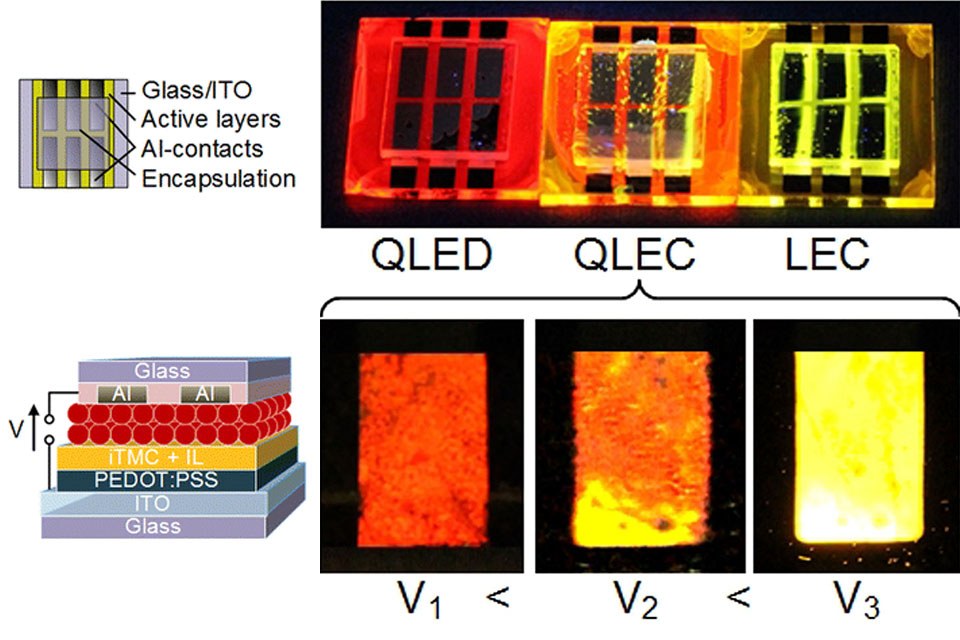LECs - The Light of the Future Thanks Nanostructures
In future they are to light up the inside of handbags or make evening joggers stand out in the dark: Light-emitting electrochemical cells, LECs, offer many advantages compared to familiar LEDs, but there's still something lacking – the right light. Until now only yellow light LECs are suitable for realistic use. But at least one other light colour is needed for more neutral light. Researchers in the Center for Nanointegration (CENIDE) of the University of Duisburg-Essen (UDE) have now been able to selectively change the colour for the first time and at the same time increase the performance of the LECs.
Their "older brothers", the LEDs, are now generally well-known and their use is widespread. They are extremely bright and efficient, but their production in a high vacuum is expensive, they are not flexible and the area lit by them is very sharply limited. By contrast, initial LEC prototypes already exist which, under normal room conditions, can be pressed directly onto a substrate. They are also flexible and have a broad light spectrum, which is enticing designers in all industries: The talk is of clothing that glows in the dark, shimmering wallpapers and head-up technology, which displays the right route in the windscreen of a vehicle. So much for the theory.
Julia Frohleiks, Ph.D. student in the junior research group of Dr. Ekaterina Nannen, has now made the theory come a step closer in practice too: Her idea is based on semi-conductor quantum dots, tiny structures in which completely independent physical laws prevail. Onto the classic layer of organometallic molecules, Frohleiks placed a further layer made of only 5 nanometre large quantum dots, which stem from the Bilkent University in Ankara (Turkey).
With a low voltage, the roughly 1.5 x 1.5 cm LEC actually lit up red. Yet the quantum dots have another additional effect: The hybrid element lights up immediately as soon as the voltage is applied and reaches its maximum intensity after five minutes. A reference LEC without quantum dots on the other hand, with the same voltage, needed five minutes before it lit up weakly for the first time, and took an hour to reach its maximum.
However, the light colour of the prototype changes back to yellow when the voltage is increased. "This is definitely an effect on which we still have to work", says Frohleiks. The next challenge on her list is white LECS, which she wants to achieve with blue quantum dots.
The junior research group is sponsored by Osram Licht AG.
Original Publication:
J. Frohleiks, S. Wepfer, Y. Kelestemur, H. V. Demir, G. Bacher, and E. Nannen. Quantum Dot/Light-Emitting Electrochemical Cell Hybrid Device and Mechanism of Its Operation.
ACS Applied Materials & Interfaces 2016 8 (37), 24692-24698
DOI: http://pubs.acs.org/doi/abs/10.1021/acsami.6b06833

